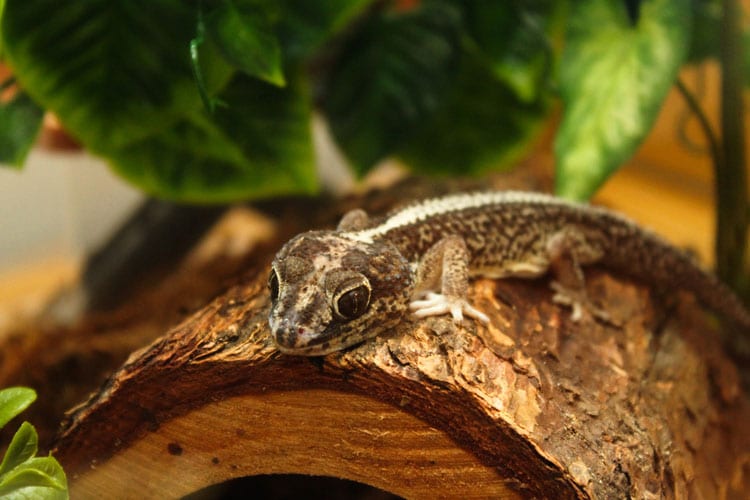Helmeted Gecko
The cryptic and variable coloration provides excellent camouflage
The Helmeted Gecko, a terrestrial gecko species also known as Geckonia chazaliae, is monotypic species usually found in the rocky regions of the coast of Morocco that extends slightly into south and north bordering Mauritania and Senegal. These species take protection under rocks and garbage during the daytime. They camouflage easily among stony pebbles due to their mysterious and changeable cryptic coloration. Similar to the terrestrial geckos, these species also have lost the toe-pads and they are unable to climb on smooth surfaces.

Anatomy
The Helmeted geckos hatchlings of about 1.5 inches develop length of develop up to a total length of about four inches. They appear considerably larger with a very short tail and extremely thick body.
So far, there have been no reports of any mutations of these species. On the other hand, the various natural color deviations in pattern can vary from pattern less to combinations of spots, giving the look of banded, stripped and spotted patterns that keeps the enthusiasts of these species busy for years in selecting the interesting and preferred traits.
As a Pet
Caging
You can easily maintain an adult pair of Helmeted Gecko in a standard ten-gallon aquarium. While caging them, make sure to provide adequate hiding places to suit their secretive nature. Although these geckos prefer rock crevices and cracks to bigger, more spacious hide houses, many keepers make use of small shallow pottery with good results.
Substrate
Among the assortment of substrates, you can consider preserving your specimen on newspapers or paper toweling, even though others have reported using fine sand fruitfully. Keep the substrate dry and clean at all times.
Food
Hatchlings nourish easily upon small crickets. As they grow quickly, they accept larger prey for their diet. These little geckos are characteristic ambush predators and hardly ever spend much time pursuing and seeking their prey. Instead, they sit and wait until the prey pass close to them. Much of their diet in their natural habitat includes bugs that attempt to seek sanctuary under the same rock as the gecko.
Humidity & Water

Provide water that is clean in a little plate. These geckos need relatively high moisture. Pay extra attention to humidity needs of these geckos when selecting a crate, as you may find those offering too much airflow, difficult to keep moist. A small wet sphagnum moss filled plastic container with a lid (with an access opening in the side) is ideal. Place the cup appropriately in the crate to give them a protected getaway similar to the wet ground these geckos would find under stones in their natural habitat.
Heating & Lighting
Provide a heated slope by placing a heat pad under one end of the crate. This should allow the Helmeted Gecko to choose from higher temperature ranges (about 85-90F) at the heated end, and the lesser temperature ranges (about 75-80F) at the cool end. You can try UVB generating illumination for these creatures, as you often see them basking in the sun during the day. Many keepers have evinced difficulty in raising neonates, and perhaps illumination will overcome the problem, but more research will throw light in this area.
Handling
These reptiles hardly ever bite, although they may do so in a controlled atmosphere. Manage them carefully, without squeezing or pinching them considering the tiny size and fragility of the reptile’s limbs. Usually, this gecko will relax silently in the hand and you will not have problems in handling.
Breeding
As most adult males have very prominent hemipenile bulges, one can easily determine (find) the sex of this specie by examining the shape of the tail base. Their clutches typically consist of one or two eggs that they produce once in four weeks or six clutches per year. Incubation is unpredictable, with records of 30 to 175 days! The successful hatchings of these species take place at a temperature of 79F to 95F.

Having discovered a fondness for insects while pursuing her degree in Biology, Randi Jones was quite bugged to know that people usually dismissed these little creatures as “creepy-crawlies”.







